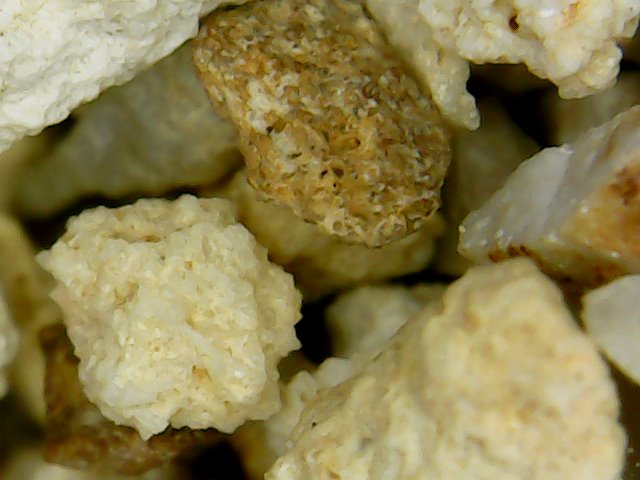filtration grit
SkySil — the finest quality filter media
Chalcedonite is a mineral of organic origin, mined in the open-pit mine in Inowłódz. Thanks to its origin (skeletons of organisms deposited in shallow seas in the Jurassic era) contains silica with a highly developed pore system.
Chalcedonite, after appropriate treatment, becomes a basis for the production of effective filter materials, its physical properties (high porosity) and chemical composition (SiO2>97%) predispose it to be used in drinking water treatment technology.
The high efficiency of the filter bed is derived from the properties of the material from which it is formed. Factors influencing the effectiveness of the grit include its chemical composition, porosity and grain shape. The best example of a highly effective filter bed is SKYSIL from Crusil sp. z o.o.. SKYSIL filtration grit is formed from chalcedonite, i.e. silica of organic origin with a highly developed pore system. The chalcedonite processing technology developed at Crusil guarantees the highest quality filter bed.

The most important characteristic of chalcedonite is its porosity, which can reach up to 30%. Thanks to this property, beneficial micro-organisms can grow in the filter bed and play a key role in removing contaminants such as manganese and ammonium ion from the water. Numerous studies confirm that the process of manganese reduction begins in the pores of the filter bed.
In addition to the high porosity, there are other technological advantages associated with the use of chalcedonite, such as efficiency in the removal of mechanical impurities, extension of filtration cycles or the possibility of using higher filtration rates. All these unique physicochemical properties are the source of numerous advantages over quartz sand.
Key benefits of the SkySil filtration grit:
- Lower de-gelatinisation zone – up to 30% compared to quartz sand.
- High iron removal efficiency – (up to 98%).
- High mass capacity – extending filtration cycles and reducing flushing costs by up to 30%.
- High filtration velocities – up to 20 m/h.
- Favourable hydraulic characteristics – low bed resistance to reduce system operating pressure.
- High porosity – ideal conditions for colonisation of manganese and nitrifying bacteria.
… which saves a significant amount of money on the construction or modernisation of water treatment plants, as well as protecting the world’s most precious resource – water.
As part of our free technology consultation, we offer:
- a proposal for the selection of the SkySil filtration grit (type of material, grain size, backfill height);
- technological indications for the operation and rinsing of chalcedonite bed filters;
- answering technical questions on the use of Skysil deposits in relation to existing solutions;
- case studies



